Seasons – Summer 2018
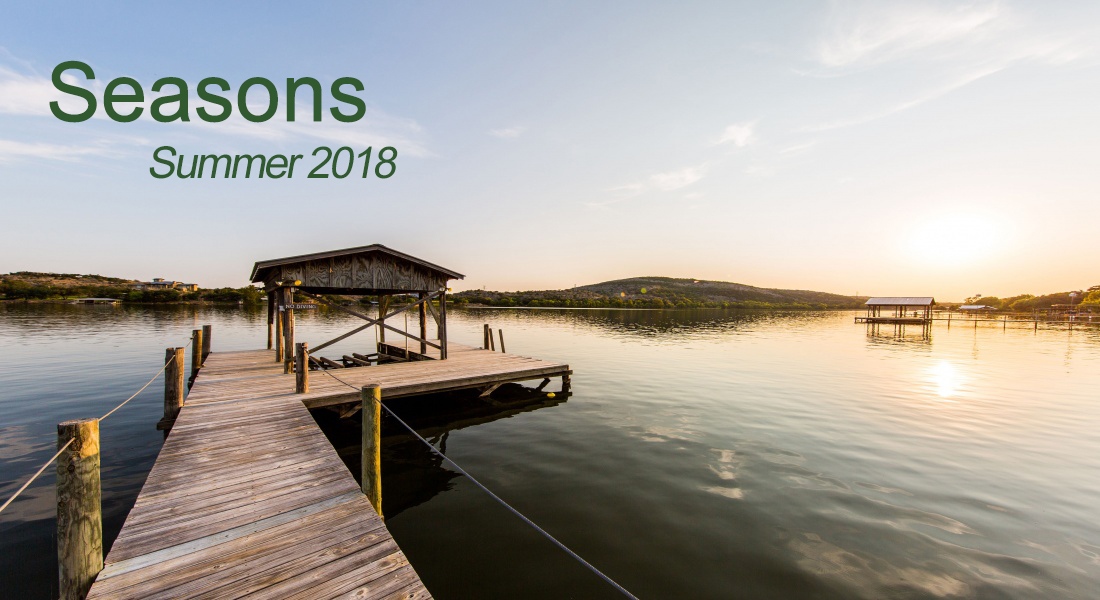
From the Plateau Land & Wildlife Management Team
Where did the first half of this year go? It has been the most eventful Winter and Spring seasons on record for us here at Plateau. We’ve been busy helping another 300+ landowners take advantage of all the benefits Wildlife Management has to offer. Mostly, we have been getting as much done as we could before another stifling Texas Summer hits home.
Those of us who are from here get used to it. We adjust our schedules accordingly, we plan ahead and hydrate often, we don’t go anywhere where we know there is no shade! We hire someone younger and more “enthusiastic” to do the work we might normally do ourselves. We’ll get our turn again soon, summer is for the young and highly motivated, right? And for the daring and maybe a little crazy. That’s a subtle jab at our wildlife technician team which braves this heat each day to provide wildlife management services to landowners across central Texas. Hat’s off to you guys.
There are some great wildlife management activities that can be completed during the summer. For starters, you could watch a wildlife show on TV or attend TWA’s WildLife 2018 – you’ll find us there! You can read through the Plateau blog and newsletter page, kick back in the A/C and do some reading. Now those are the activities we’re talking about.
All kidding aside, water! Make sure that your wildlife and you, and your pets, your plants and your friends have plenty of water. Other than that, the best way to know what activities are best for any time of the year is to call your Plateau Biologist or check out our summer suggestions later on.
Seasons is about transitioning from one season to another more than the season itself. Though it has really not yet started, summer will be over before we know it and cooler weather will be here. In this issue, we cover some great topics that can help you get through the summer and start planning for the fall.
We love sharing our stories and those of the landowners we have the opportunity and privilege to work with. It’s the coolest work in the world for the coolest company on the planet. Wait, are we cool yet?
So sit back, relax and here’s wishing you all a happy Summer!
Until next season and Seasons,
The Plateau Team
Table of Contents
Wildlife Management Minimum Acreage Explained (Once and For All)
Summer Wildlife Management Activities Checklist
Counting Deer
Serpents
Service Spotlight: Service Agreements
Wildlife on Wednesday – Plateau’s free summer webinar series
Eminent Domain Controversey for Foreign Oil & Gas Delievery
Introducing Kendrick Baros
Plateau Land Group Featured Listing
Wildlife Management Minimum Acreage Explained (Once and For All)
By the Plateau Management Team
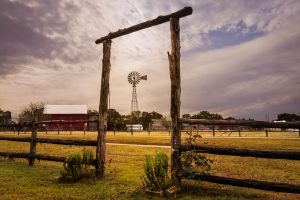 Do you own fewer than 20 acres in Ag or Timber? Have you been told you do not qualify for Wildlife Management because you have fewer than 20 acres? Don’t give up so soon. Keep reading and we’ll explain why the Wildlife Management valuation may be right for you, and why you do actually qualify.
Do you own fewer than 20 acres in Ag or Timber? Have you been told you do not qualify for Wildlife Management because you have fewer than 20 acres? Don’t give up so soon. Keep reading and we’ll explain why the Wildlife Management valuation may be right for you, and why you do actually qualify.
There are over 3 million acres in Texas with wildlife management as the current Ag use. Many of those are smaller acreage properties, that when combined, make up a larger patchwork across regions. This patchwork of lands being managed for wildlife, as opposed to grazing and agricultural use, are helping to create a resurgence of good wildlife habitat in many areas.
Wildlife Management minimum acreage requirements are probably the most misunderstood and most misapplied rules when it comes to qualifying for a wildlife management exemption, or valuation. It’s actually not all that confusing. The short version is that, for most landowners, there is no minimum acreage requirement.
The only time minimum acreage is a consideration in wildlife management is when a property is being subdivided, or has been, in the previous year. The facts about wildlife management minimum acreage are available from sources like Plateau Land & Wildlife and Texas Parks & Wildlife. Following is a summary of the facts used to win a minimum acreage hearing recently. We hope that you will think to call us if you ever feel you are the victim of these rules being misapplied.
Wildlife Management Minimum Acreage in the Tax Code
The rule that relates to wildlife management minimum acreage (wildlife use requirement) is Texas Administrative Code Rule 9.2005:
The paragraph that outlines whether a minimum acreage applies is 9.2005(b), which states:
(b) If the number of acres in the tract of land is equal to or greater than the number of acres in the tract of land on January 1 of the preceding tax year, the tract of land is not subject to the wildlife use requirement.
This means that any wildlife management property is exempt from the minimum acreage requirement as long as the property is not reduced in size in the previous tax year. If your property was one size when you paid property taxes on it a year ago, and it is still that size when you apply for wildlife management, then minimum acreage (i.e. wildlife use requirements) does not apply. Your property qualifies for wildlife management.
Both the Texas Parks and Wildlife Department (TPWD) and Texas Agrilife Extension also have publications that explain these rules:
Texas Parks and Wildlife Department
The folks at Texas Parks and Wildlife are the fine people who set all these standards and requirements to begin with. They fully understand what the intended meaning was when Wildlife Management first became an accepted alternative to traditional Ag. The publications TPWD has provided and their own website is very clear about these requirements when it comes to wildlife management minimum acreage. Here are some of those references.
“Is there a minimum acreage requirement? What if I own several adjacent tracts?
…For properties that have been reduced in acreage since the previous tax year, there are minimum acreage requirements. Please check with your county appraisal district for those minimum acreages as they depend on the appraisal region in which the property is located. For all other properties, there is no minimum acreage requirement.”
TPWD’s legal summary “Acreage Requirements”
“There is no minimum acreage requirement for open-spaced agricultural appraisal based on wildlife management use unless the tract of land has been reduced in acreage since January 1 of the preceding tax year.”
Plateau Land and Wildlife representatives deal with this question on an almost daily basis. Resources such as TPWD and Texas Agrilife Extension Service offer statewide advice and recommendations.
What does the Texas Agrilife Extension Service have to say about Wildlife Management minimum acreage?
The Agrilife Extension is a wonderful and trusted service for landowners in Texas. In one of their free publications, The Texas Agrilife Extension Service provides a great example of the wildlife management minimum acreage rule and how it should and should not be applied.
Those examples and a specific scenario that helps to clear up any confusion about wildlife management minimum acreage can be found in the Agrilife Extension Publication ESP-377 “Wildlife Management and Property Valuation in Texas.” See Scenario 1 on Page 6.
Scenario 1:
Question 1: Does the land currently have agricultural use valuation?
Answer: Yes
Question 2: Has the size of the property having agricultural use valuation been reduced since the last tax year?
Answer: No
Next step: There is no minimum acreage required; apply for conversion to wildlife management agricultural use between January 1 – April 30.
As you can see, all three of the sources reference that if a property has not been subdivided or reduced in size since the previous tax year, then there is no minimum acreage requirement for that property. If that is your situation, then you qualify to move from traditional Ag use to wildlife management no differently than if you were changing from running cows to raising goats as your Ag use. If you have had a reduction in property size, the county appraiser will have the exact minimums. It should be that simple.
The fact of the matter is, there are people involved in all of this. Wildlife management use requirements, minimum acreage and otherwise, have been misinterpreted and misapplied in many cases for years. Good landowners all across Texas have been working on this for years with Plateau Land & Wildlife to get the facts straight. We argue this rule successfully several times a year for landowners at Central Appraisal Districts.
Whereas the information and rules come from state agencies, these entities cannot advocate on your behalf as a landowner. If you run into an issue where you’re told that the wildlife management minimum acreage requirement applies to your property, when in fact it does not, Plateau Land & Wildlife is a private company that works for landowners. We know the rules and how they should be applied, and we will advocate for you when the law is on your side.
If you have more questions or need help with a specific situation, remember there are no acreage requirements for wildlife valuation, unless you have reduced the size of your land. And then, the minimum varies county by county.
Back to TopBack to Top
Summer Wildlife Management Activity Checklist
By Kameron Bain, Landowner Account Manager
It is hard to believe today is the first day of Summer since it has felt like summer for weeks now. While Summer may bring the heat it also brings longer days. These long days are a benefit to landowners in wildlife management as it provides extra time to get those activities completed. So put on your sunscreen and grab your water – there are many compliance activities that can be done this time of year.
- Chemical Control
- MLDP Paperwork – Due August 15
- Deer Surveys – Start in August
- Pond Construction
- Pond Renovation and Repair
- Imported Red Fire Ant Control
- Strip Mowing – Late July and August
- Half-cutting
- Supplemental Water Maintenance
- Small Mammal Surveys
Counting Deer
By Sarah Kahlich, AWB ®, Senior Wildlife Biologist
Sitting in the deer stand, waiting patiently for any deer that may want to kindly venture my direction, my mind starts to wander, as it easily does when I am not actively engaged. How many bucks and does are on this property? How many should be harvested this year? Is the population healthy and sustainable on this habitat? Endless questions zip through my mind, I should have brought a pencil and paper with me. These are probably common questions among deer hunters as they sit in a blind waiting to harvest a deer. The mind jumps to another thought, ‘I should have conducted a deer survey on my property.’
All these questions are good ones and should be going through your mind. Maintaining a healthy deer herd does not happen by chance but through proper management. If you decide to have a deer survey conducted before deer season, whether it is a camera survey or a spotlight survey, do you really know what the results mean when they come back to you? It seems straight forward, I have 15 bucks and 30 does, but when you actually look deeper into the survey you will find out these numbers are not as simple as you might have thought.
It would be ideal to be able to count every single animal on your property during your survey, but like a survey of humans in the United States, not everyone participates or can be found to contribute to the results. Deer surveys are very similar in that they are samples, or an estimate, of the population. It is not a complete count and is subject to some error. Keep in mind: It is nearly impossible to obtain a complete count of deer, even when contained in a high fence. Deer cannot be rounded up in a corral like cattle and counted. Instead of relying solely on one year’s survey, it is best to rely on multiple consecutive years of survey data, called a trend. Trends are more important than actual numbers from one year.
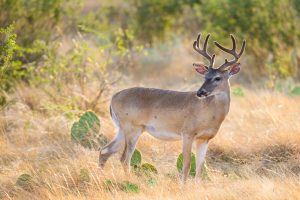 Trends allow you to see what your deer population has been doing in the past, if your numbers are decreasing each year and you have not harvested deer, it could be from low fawn recruitment, which could be caused by drought conditions, predation, or other reasons. High doe populations might mean you should focus more on culling does instead of bucks.
Trends allow you to see what your deer population has been doing in the past, if your numbers are decreasing each year and you have not harvested deer, it could be from low fawn recruitment, which could be caused by drought conditions, predation, or other reasons. High doe populations might mean you should focus more on culling does instead of bucks.
Herd composition numbers are as important as total numbers as they can greatly influence harvest recommendations. Doe:Buck ratios (sex ratios) tell us how much of the harvest should be composed of females and how many males. This number also tells us what animals may be replaced by births. A doe:buck ratio of 2:1 (2 does for every buck)is a desirable ratio, permitting good fawn production while keeping growth manageable. As the ratio increases, the number of harvestable bucks decreases and population growth can quickly get out of hand. If the ratio was 10:1 the population is skewed heavily towards females, requiring a higher doe harvest. You should almost always harvest as many, or more, does than bucks, but the actual harvest rates should be based on ratios from your surveys.
A second important ratio is Fawn:Doe, this number indicates the health of the herd, in terms of reproduction. During drought periods reproduction numbers will be low because females become stressed by the decrease in quality forbs and browse. When the conditions are favorable (timely rains, plenty of forage) white-tailed deer females tend to give birth to twins. Most survey techniques underestimate fawns. They do not show up on cameras as often as adults and they may remain hidden during spotlight surveys. This makes the fawn:doe ratio appear lower than what it may actually be. Biologists may use an assumed ratio based on history and current conditions to calculate harvest recommendations.
Sex ratios and fawn crops are best determined from incidental observations. Bucks, does, and fawn observations collected during daylight hours while driving or sitting in blinds are an important supplement to spotlight or remote camera surveys as they help more accurately depict these ratios. Assumed ratios may be used if ratios are far too low or high and do not seem realistic for the property. If very low fawn ratios are used, it could result in not harvesting enough deer. The following year the deer population might appear to have exploded. Doing this repeatedly can result in deer overpopulation that exhausts available forage, leading to the need to harvest even more deer to help keep the population at acceptable numbers. In the Edwards Plateau and many other parts of Texas west of I-35, under-harvesting is a much greater concern than overharvesting as deer populations are more likely to be too high rather than too low.
The most important thing to keep in mind when conducting a camera survey or a spotlight survey, whether you are doing it yourself or using Plateau, is that the results are not a complete count of the deer on your property, only an estimate. Research shows that we (biologists included) miss seeing a lot of deer during spotlight surveys. Some deer are excellent at avoiding detection when you conduct a survey, especially fawns. Since camera surveys are an attempt at a complete count, we recommend turning off feeders that will not be used for the survey at least 1-2 weeks prior to a camera survey so deer can become accustomed to using the feeders designated for the camera survey. Exotics on your property can deter white-tailed deer from utilizing a feeder as well.
If your survey reports seem low compared to the number of bucks, does, and fawns you have seen on your property, it is not uncommon and does not warrant a huge concern in any given year. Utilizing multiple methods increases your observations and can be used to increase the reliability of the survey and the resulting recommendations. To accomplish this, record observations when you are driving or walking around your property during the daylight, possibly conducting dedicated daylight drive surveys through your property. Look at the vegetation on your property, checking browse on desirable vegetation is an excellent indicator of the deer population. If you are seeing heavy browse pressure on all the new growth, chances are there are too many deer. Keep harvest records; the condition of deer being harvested say a lot about what is happening in your deer herd. Recording weights, antler size, and body conditions are important, but each deer should be aged to at least three categories – young (0.5-1.5), middle-aged (2.5-3.5), and mature (4.5+). Tooth-wear aging doesn’t do a great job of nailing down the actual age in years, but it can let you put deer into these three categories.
In Summary: All survey information is most useful as trend data. Keeping yearly survey information will help make your trend data more robust, which will help in determining the impact of your current management practices. Utilize more than one survey method – the more data you collect the better your harvest recommendations will be. Not every deer will show up on camera. Just like you may see signs of hogs on your property, not seeing any on your camera or during your spotlight survey does not mean they are not there. Surveys are estimates and are subject to some error, but when conducted annually, they provide useful information for setting your desired harvest and monitoring your deer herd.
Happy Hunting!
Back to TopBack to Top
Serpents
By Nick Fisher, Wildlife Services Technician
Serpents have been feared and portrayed as evil creatures since the beginning of time, likely due to their ability to control their body without the use of limbs. After spiders, snakes are the most common animal phobia, often without a matter of size or species. Although all are similar in shape, snakes have adapted to thrive in almost all ecoregions of the world from arid deserts to tropical rainforests and even oceanic zones. In Texas, there are over 100 species of snakes currently described ranging over the vast mosaic of habitat the state offers.
As a naturalist and wildlife advocate, a common request from my peers is species identification. Nine out of ten times, a blurry photo of a non-venomous snake from the colubridae family is sent to my phone with the caption, “rattlesnake?” (Often with a detached head). If you didn’t spend years studying these patterns and colors, the common first response is to assume the most abundant and feared venomous species in our state – the rattlesnake. Patterns and colors of snakes often vary in order to camouflage with their environment – mostly in an attempt to avoid predation. Not only do many non-venomous snakes appear visually similar to rattlesnakes, but some may coil up and even imitate a “rattle” by use of shaking their tails in leaves or grass when approached. Others might flatten their heads and form a more triangular head shape, also mimicking the venomous Viper family of snakes (i.e. Rattlesnakes, copperheads, water moccasins).
Learning the natural history of snakes may alert you to where you might find one, or knowing where to avoid. As with most wildlife, being discovered triggers one of two responses- fight or flight. In my 15+ years of experience searching for and attempting to capture and study snakes, unless completely cornered (very difficult to corner a creature that has no limbs to get in the way) or already captured, the first thing these creatures want to do is get as far away from you, and as out-of-sight, as possible. If you have ever handled a snake, you probably know another common attempt at warding off predators is to “musk” or discharge a foul-smelling liquid to seem less appetizing.
You may find that different species of snakes display different temperaments, often even varying by individual, so never assume because you picked up one species and didn’t get bit, that the next one will not bite you either. That being said, I have found water snakes from the Nerodia genus (non-venomous) often times show aggression first, striking before making their way to the nearest body of water and swimming to safety. You might also find it surprising that the most common water snake in Central Texas is the Diamondback water snake (Nerodia rhombifer.) No, this is not a mix between a diamondback rattlesnake and a water moccasin. This is a thick-bodied, non-venomous snake that can stretch over 5’ in length and is found near most bodies of freshwater. Most of its day is spent basking until escaping to the water when threatened, usually long before you ever knew it was there and not resurfacing until completely safe to do so. The next most common water snake of our area is the plain-bellied water snake (Nerodia erythrogaster,) another non-venomous water snake with thick, dark bars across its back and an off-white underside. Plain-bellied water snakes exhibit similar life history to the diamondback water snake.
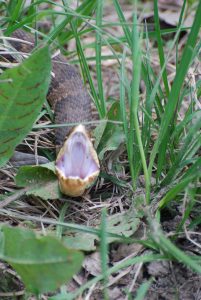 Often similar in color to the non-venomous water snakes, the water moccasins, or cottonmouths, that inhabit our region vary from light brown to black and patternless, often losing patterns and darkening with age. The cottonmouth, Agkistrodon piscivorous can be distinguished from the others by close examination (sometimes closer than safe to do so). The elliptical-shaped pupils with a triangular head are the most visibly determinant characteristics of the viper family in Texas.
Often similar in color to the non-venomous water snakes, the water moccasins, or cottonmouths, that inhabit our region vary from light brown to black and patternless, often losing patterns and darkening with age. The cottonmouth, Agkistrodon piscivorous can be distinguished from the others by close examination (sometimes closer than safe to do so). The elliptical-shaped pupils with a triangular head are the most visibly determinant characteristics of the viper family in Texas.
Alternatively, the one snake that does not fit into this category is a member of the Elapidae family (same as cobras) is the coral snake, (Micrurus tener.) The common rhyme to remember is “Red-on-yellow, kill-a-fellow- red on black, friends with Jack” (or venom lack). Although the coral snake is an elusive, relatively timid species that is rarely seen compared to the other venomous snakes of our region, they exhibit fixed fangs that can deliver a painless bite injecting neurotoxic venom into the bloodstream. The “red on black” refers to a non-venomous snake of similar size and colors to the coral, the milksnake, Lampropeltis triangulum.
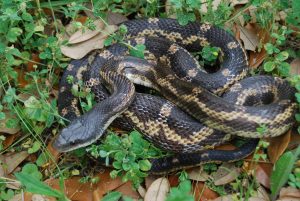 Rattlesnakes are the most widespread species of venomous snakes in Texas and therefore account for the most bites by a venomous snake, although only about 1-2 of the states’ bites are fatal each year and the antivenin is likely readily available when seeking medical treatment. Copperheads and cottonmouths account for less than 5% of the deaths in the U.S. due to their less potent venom that rarely requires antivenin. Of all encounters I have experienced, even rattlesnakes will likely attempt to escape before confronting a potential predator directing an infamous, hair-raising rattle your way letting you know you are getting too close.
Rattlesnakes are the most widespread species of venomous snakes in Texas and therefore account for the most bites by a venomous snake, although only about 1-2 of the states’ bites are fatal each year and the antivenin is likely readily available when seeking medical treatment. Copperheads and cottonmouths account for less than 5% of the deaths in the U.S. due to their less potent venom that rarely requires antivenin. Of all encounters I have experienced, even rattlesnakes will likely attempt to escape before confronting a potential predator directing an infamous, hair-raising rattle your way letting you know you are getting too close.
The next time you encounter a snake, take the time to examine it at a safe distance and try and determine if it really is a threat to you, your family, or your pets. Also realize you are likely increasing your chances of being bitten by sticking around in an attempt to dispatch the snake, instead of allowing it to move along (remember, snakes can still deliver a venomous bite with a recently severed head).
A snake that is commonly seen in an area is very likely helping to control a potential vermin problem that could be causing financial damages to your home or vehicles. Snakes are not only important ecosystem organisms as predators, but also prey for birds, mammals, and even other snakes. Several non-venomous snakes including bull snakes and indigo snakes are known to consume rattlesnakes. If you are unsure of the species of snake, get a photo or make good notes on what you see and ask a professional biologist. I have relocated several snakes from urban homes simply because I enjoy teaching others about wildlife, especially reptiles and amphibians. If you are curious or concerned about what kind of snake you may be looking at, and the benefit they may be providing, reach out to a biologist or send us a picture and we will be happy to inform you. Another good resource is the iNaturalist application. Just capturing a photo and submitting it can provide you with a species name, allowing you to do some more research.
Back to TopBack to Top
Service Spotlight: Service Agreements
By Kameron Bain, Landowner Account Manager
Each year over 400 landowners in wildlife management purchase an Annual Wildlife Management Service Agreement from Plateau. Plateau Service Agreements are annual contracts that assist landowners in fulfilling the goals of their wildlife management plan as well as any other property goals. Agreements can include everything from Annual Reports to feeder re-fills, bird surveys to consulting time with your biologist so you can learn more about your property. Plateau can do as few as two activities and you can do the activities you enjoy most, or we can do it all! Every Service Agreement is tailored to the fit each landowners needs, interests and budget.
While most of these service agreements appear in landowners inboxes in the Fall with ease, they may not be aware of the dedicated team who is working behind the scenes to ensure each agreement is correct and completed to the highest standards.
The service agreement (or service agreement renewal) process begins in August with a review from the Plateau Biology team. Your Biologist offers recommendations on changes, additions or input they received from the landowner. After their review, it’s time to build the agreements. Log sheets collected throughout the year are reviewed to check on missing nest boxes, repairs needed on Plateau products and products and services suggestions made by the Ecological Services Technicians who are out doing the work on your property. Once the agreement is built, our Products & Services Manager, Steve Parker, reviews the agreement for one final check and the stamp of approval. We then send a copy for you to keep and will diligently work on fulfilling everything on our side with the highest expertise and documentation.
When you have a service agreement with Plateau, know that you are in good hands, and that frees you up to enjoy your land the way it is supposed to be enjoyed – whether that’s birdwatching, hunting or family reunions! Spend time on your land how you want to, and we’ll be here for everything else.
“You can count on Plateau Land & Wildlife Management. They are professional, personable, and get the job done. I rely on them!”
John Horton, Landowner
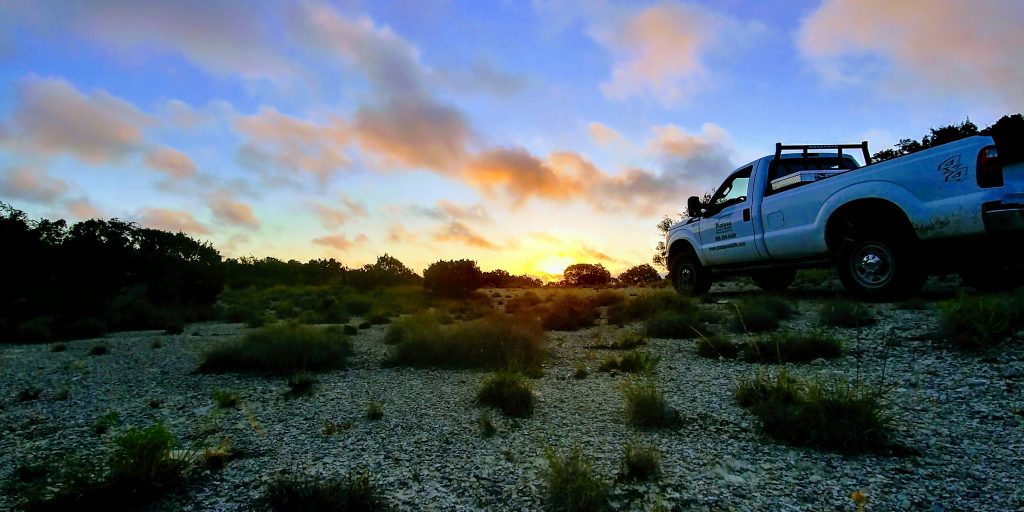
Back to TopBack to Top
Wildlife on Wednesdays – Plateau’s free summer webinar series
Join Plateau on Wednesdays throughout the summer to learn more on a variety of landowner topics, ranging from native plant identification, feral hog management, risk management and liability, and much more. Register or join us for as many webinars as you’d like – they’re free!
June 27, 2018, 12 pm, free
Butterflies, Wasps and Bees, Oh My! Hope to manage for native pollinators on your property
July 18, 2018, 12 pm, free
Feral Hog Management – The old and new technologies for managing hogs on your property
August 1, 2018, 12 pm, free
Know Your Plants: Native plant identification for common grasses, forbs & wildflowers
August 15, 2018, 12 pm, free
Liability Protection, Risk Management, and Owning Rural Land
August 29, 2018, 12 pm, free
Five Tools of Wildlife Management – The basic tools necessary for successful wildlife management
September 12, 2018, 12 pm, free
I Need Help! The In’s and Out’s of Landowner Incentive Programs in Texas
September 26, 2018, 12 pm, free
Birding Basics: An Introduction to Birding 101
Can’t make a webinar? Visit our on-demand webinar page for any previously-done and upcoming webinar recordings.
Back to TopBack to Top
Eminent Domain Controversy for Foreign Oil & Gas Delivery
By Attorneys & Counselors Shane Neldner and Patrick Reznik


The public may not be served when pipeline companies ship oil and natural gas from Texas to foreign markets. Private pipeline companies have long-enjoyed the power of eminent domain. The Fifth Amendment to the US Constitution states “nor shall private property be taken for public use, without just compensation.” The term “public use” remains controversial among landowner rights groups as they question whether a pipeline company piping and selling Texas produced oil or gas to Mexico for profit is a Texas “public use.”
Groups dedicated to landowner rights and environmental protection are looking for a way to deny the power of eminent domain for pipeline projects that don’t actually directly serve a “public use” of Texans. These groups argue that not only do pipelines that send oil to foreign markets fail to benefit the Texas public, they actually hurt the public by driving up domestic oil and gas prices. These groups argue that such factors should disqualify a pipeline project company from taking property for “public use.”
These theories are largely untested, but pipeline companies are taking it seriously. They quickly point to the number of construction jobs they create, and some pipeline companies are installing domestic branches to the pipeline to foster local economic development opportunities and taking other measures to demonstrate that their project benefits the Texas public.
A recent and interesting “public use” opinion from the Colorado Court of Appeals is Carousel Farms Metropolitan District v. Woodcrest Homes, Inc., No. 2017COA149 (Nov. 30, 2017). The Court invalidated an attempted taking of Woodcrest’s property, concluding that the condemnation was neither for a public purpose nor necessary for that purpose. The attempted taking of a public road was not for public use but the alter ego of the land developer.
Braun & Gresham, PLLC and groups dedicated to landowner rights are not satisfied by these measures. We are following developments and will keep you updated. For questions about eminent domain, give us a call at 512-894-5426.
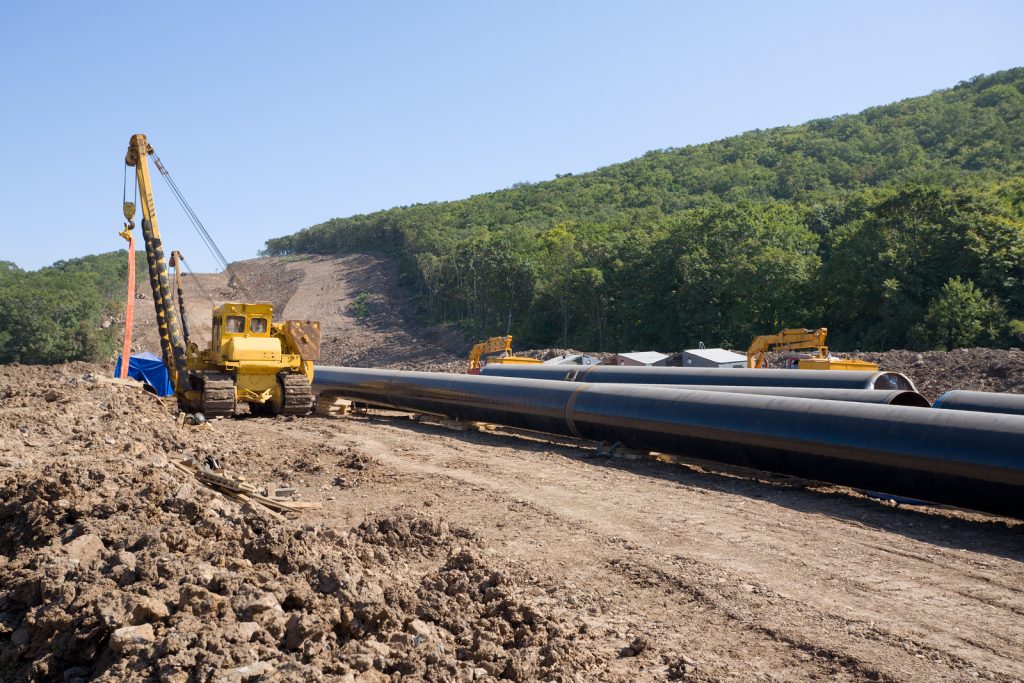
Back to TopBack to Top
Introducing Kendrick Baros

Plateau Land Group is excited to announce the addition of Kendrick Baros to the team of rural real estate agents! Kendrick works with buyers and sellers primarily in the counties surrounding San Antonio and south of Interstate 10.
Kendrick grew up in the Cuero, TX area working on his family’s ranch. He attended college at Texas A&M where he earned a Bachelor of Science in Industrial Distribution. A sales professional ever since, Kendrick has 18+ years’ in the construction and chemical industries. Additionally, he has been a licensed real estate agent since 2007 with his father’s brokerage. This wide range of experience has afforded him a strong network of industry professionals and ranchers all over South and Central Texas. Today, Kendrick owns and manages several family ranches near Westhoff, TX. As an avid hunter and fisherman, he has hunted deer and elk all over North America and enjoys fishing in Rockport. He loves spending time with his wife and two sons who are involved in 4-H, church, football, track, and basketball.
Click here to contact Kendrick.
Back to TopBack to Top
Plateau Land Group Featured Listing
Inks Lake Waterfront: The Retreat at Cockleburr Cove
This truly unique property is defined by almost 800 feet of Inks Lake shoreline, 7.5 acres, 5 beautiful residences, all with their own style and charm, and access to Austin and the surrounding Hill Country. Inks Lake is a constant level lake well-known as a recreational destination throughout Texas. This is a rare chance to own a huge lot and a ready-made family or corporate compound on such a popular and accessible lake. $5,950,000.
Watch a video of this listing here

View all of Plateau Land Group’s listings.
Click here to receive PLG’s newest listings by email.
Back to TopBack to Top
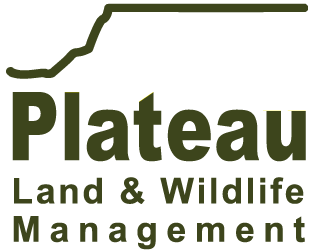






Sorry, the comment form is closed at this time.